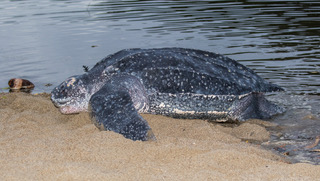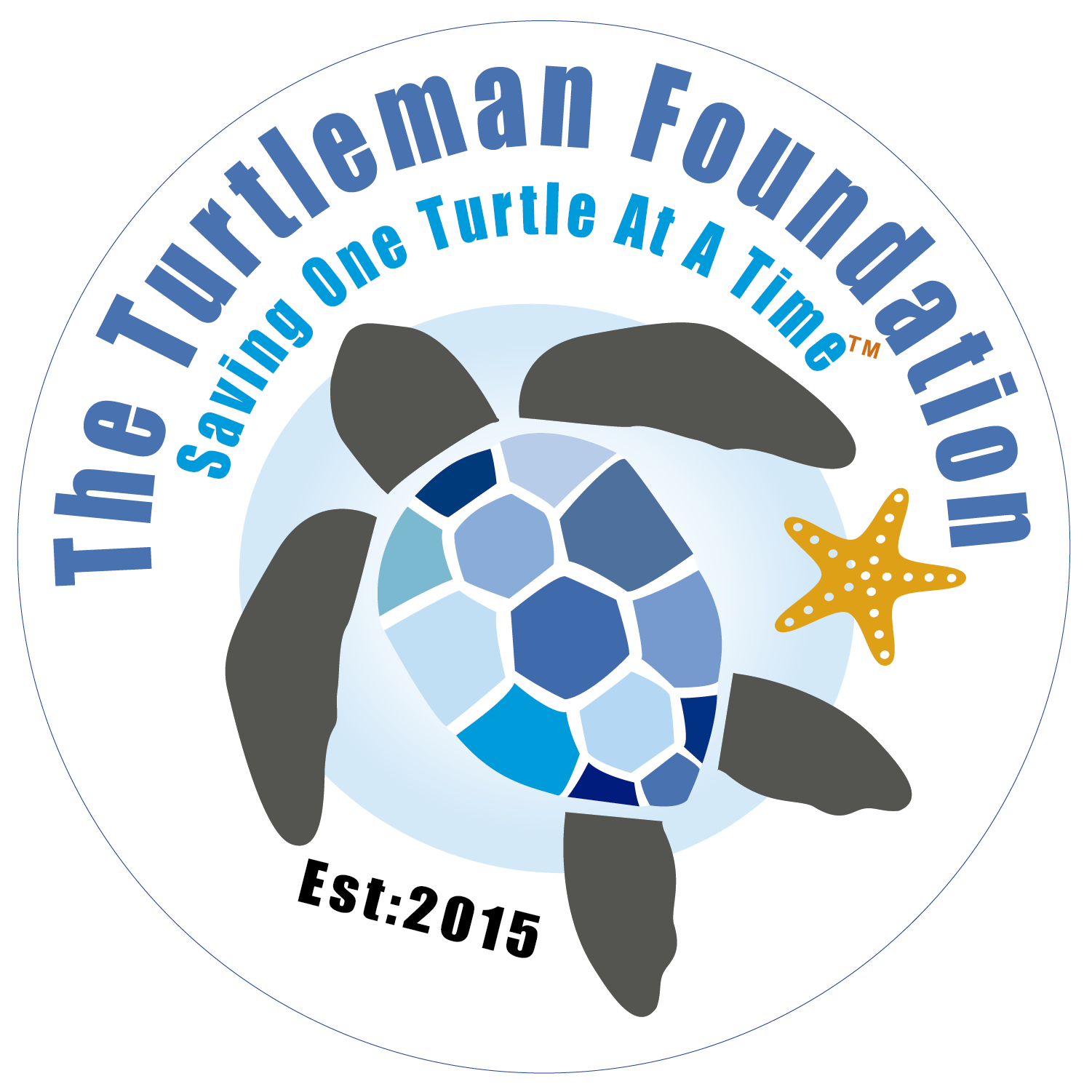LEATHERBACK
The largest of the sea turtles, leatherbacks reach more than 1.8 m (6 ft) in length and more than 640 kg (1,410 lbs) in weight. During their long migrations, leatherbacks regularly dive to depths greater than 1,000 m (3,281 ft) in search of gelatinous zooplankton to eat. Leatherbacks are rapidly declining in many areas of the world.

SCIENTIFIC NAME
Dermochelys Coriacea
STATUS
Vulnerable
DISTRIBUTION
- Circumglobal
- Present in all world’s oceans except The Arctic and The Antarctic
- Nesting areas in tropics
- Non-nesting range extends to sub-polar regions
SIZE
ADULT
- Length 5′ – 6′ Ft
- Weight 660 – 1,400 Pds
HATCHLING
- Length 2″
- Weight 1.5 Oz
DIET
For all life stages, gelatinous zooplankton (jellies and jelly-like organisms)
REPRODUCTION
- Reproduce every 2-4 years
- Lay 4-8 nets per year
- Lay 50-90 egg is about 2″ in and Weighs about 3 Oz
- The eggs weigh roughly 80 grams
- Incubation period is approximately 60 days long
LEATHERBACK TURTLE FACTS
- The leatherback is the only remaining member of its taxonomic family (Dermochelyidae).
- Leatherbacks rely on a unique suite of adaptations including large body size, changes in activity and metabolic rate, peripheral insulation (i.e. fat), and adjustments in blood flow to maintain stable core body temperatures in varying water temperatures from temperate to tropical latitudes.
- The largest leatherback ever reported was an adult male found in Wales. It was greater than 2 meters (6.6 feet) long and 900 kg (1980 lbs) in mass.
- The longest recorded leatherback migration was 13,000 miles – one way!
- Leatherbacks dive much deeper than other turtles, regularly reaching depths beyond 1,000 m (3,281 ft). The leatherback’s deepest recorded dives exceed 1,250 m (3,900 ft).
LEATHERBACK TURTLE FACTS
- They are the largest sea turtle in the world!
- The average life expectancy is 10-20 years but can live up to 50 years.
- You can find them worldwide in tropical and subtropical oceans.
- They have special adaptations to protect them from sea jelly venom called papillae.
- They can dive to depths of 4,200 feet, deeper than any other turtle, and they can hold their breath for up to 85 minutes.

